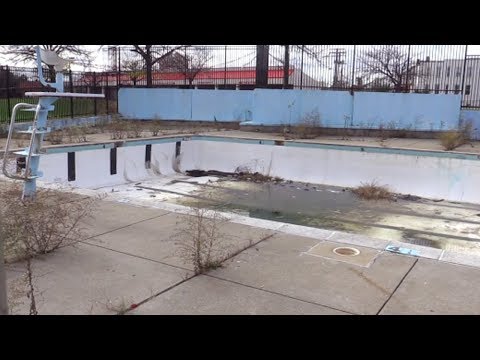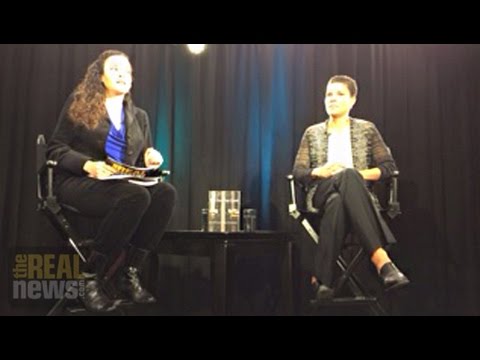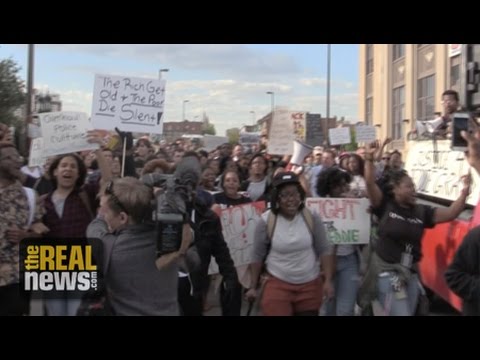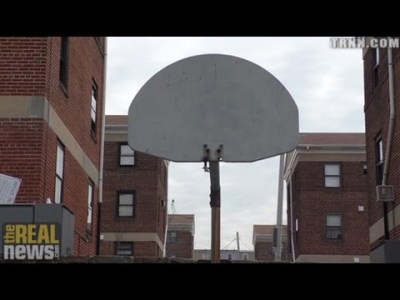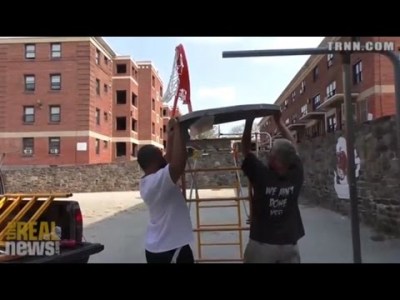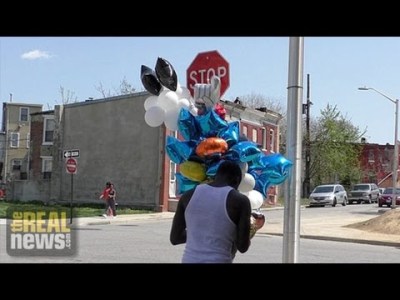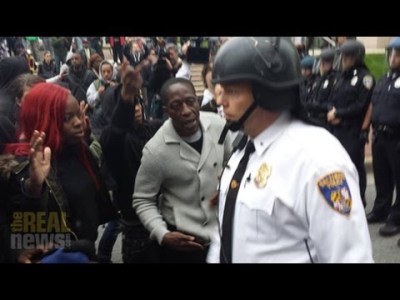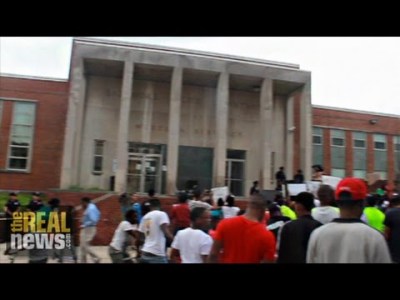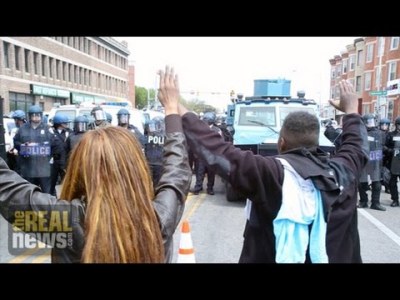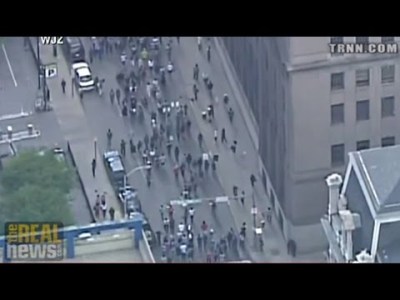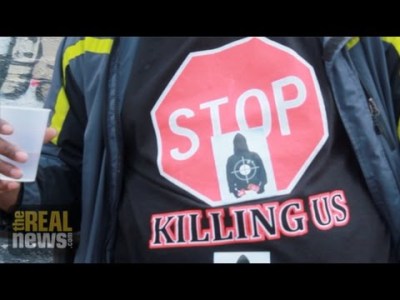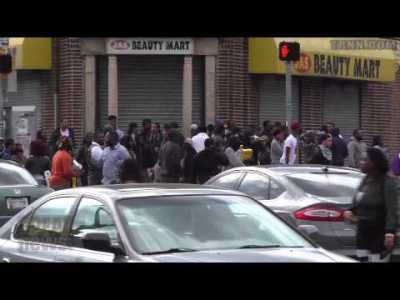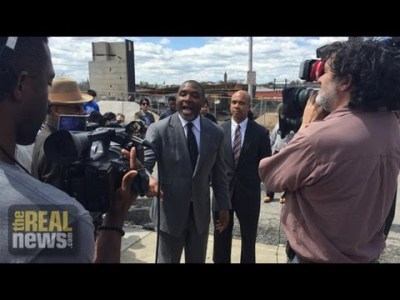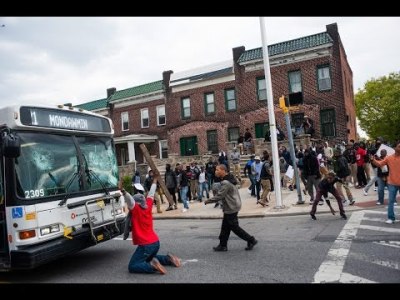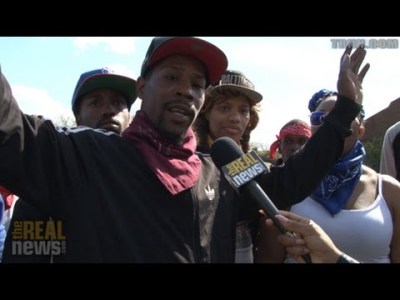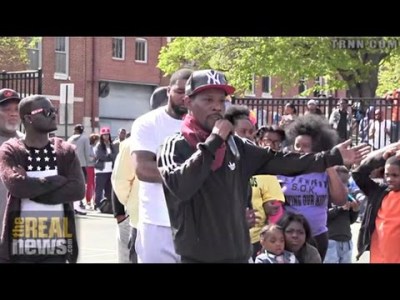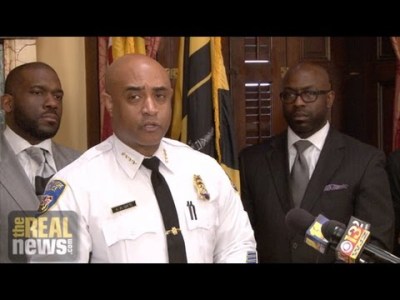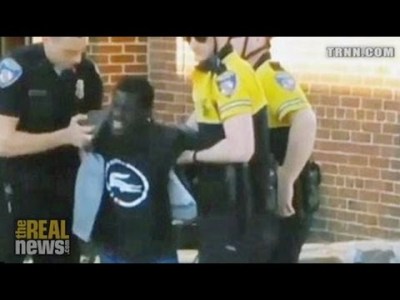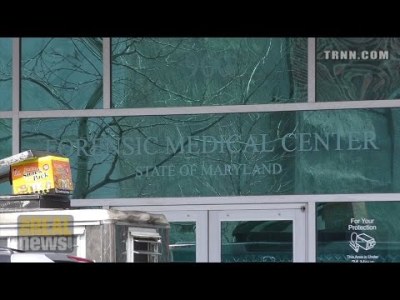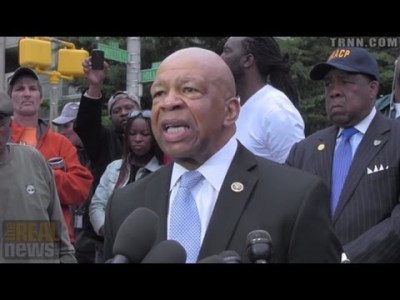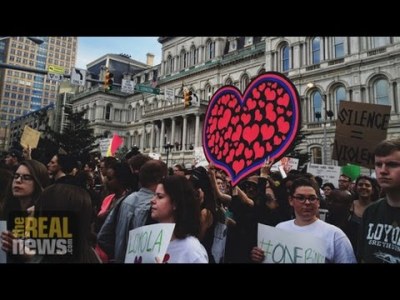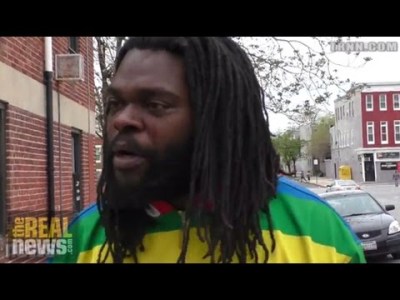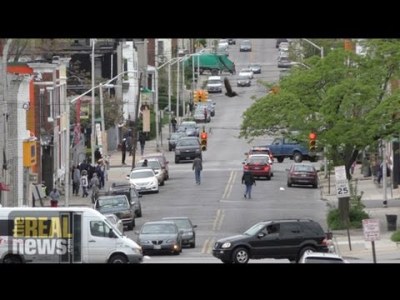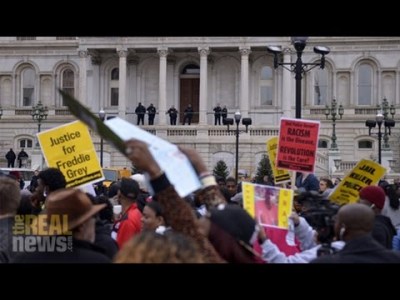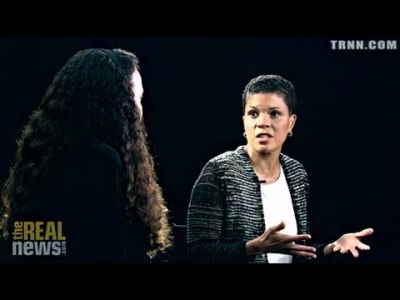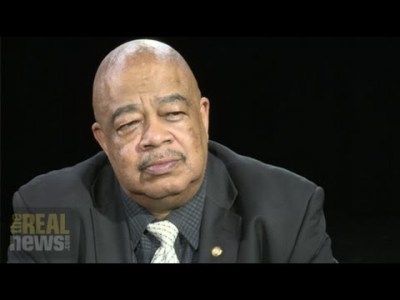
In April of 2015, 25-year-old Baltimore resident Freddie Gray locked eyes with a police officer. He was chased, arrested, hogtied, and thrown into the back of a van. He died a week later from severe spinal cord injuries. The people of Baltimore rose up to protest his death and the decades of aggressive, racist overpolicing that led to Gray and so many other Black Baltimoreans losing their lives and freedom.
The Real News Network had been headquartered in Baltimore for just over one year when Freddie Gray died from the injuries he sustained in police custody. Previous to Gray’s death, TRNN had covered in-depth the failed efforts to institute police reform, the prevalence of entrenched poverty, along with a systemic lack of affordable housing and other inequities that defined Baltimore.
Just two days before Gray died, TRNN reporter Taya Graham hosted a town hall with legendary author Michelle Alexander to discuss her book The New Jim Crow, which she said described how criminal justice in America functioned more like a “caste system” than an institution focused on public safety. Several days later, the city erupted at the Mondawmin metro center when yet-to-be-identified public officials shut down the bus system and subway, leaving hundreds of students stranded when schools let out that afternoon.
TRNN photographers Cameron Granadino, Megan Sherman, Bashi Rose, and others covered the back-and-forth between police and the city’s youth and the ensuing uprising that rocked the city. Reporters Eddie Conway, Angel Elliot, Taya Graham, Thomas Hedges, Stephen Janis, and Jaisal Noor covered the ongoing uprising as the residents of Baltimore asserted their collective rights and demanded real change in a city that had been reluctant to do so.
This page is an archive of those reports.
Town Hall at Freddie Gray’s Gilmor Homes
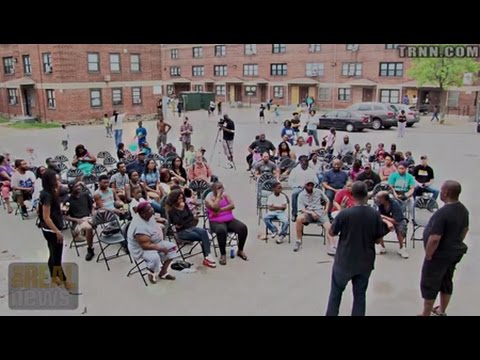
In the aftermath of Freddie Gray’s death, TRNN producer Eddie Conway hosted a town hall in the Sandtown-Winchester neighborhood of Baltimore, where residents shared their experiences of living in neglected housing and facing persistent police harassment.
How neoliberal policies failed Baltimore, and gave Trump fuel for his tweets
In 2015, shortly after the uprising, TRNN investigative reporters Stephen Janis and Taya Graham produced a documentary that explored the political dynamics that made poverty both profitable and intractable in Baltimore. Through the lens of the conditions that prompted residents to take to the streets, the film examines the roots of aggressive policing, lead poisoning, and artificial boundaries imposed to maintain economic segregation.
Michelle Alexander: Baltimore must organize to stop police brutality
Renowned author of ‘The New Jim Crow’ says the death of Freddie Gray points to the need for concerted community action to halt excessive force targeted at African Americans.
The story of the 2015 Baltimore Uprising told through the voices of the people
After extensively documenting the uprising following the death of Freddie Gray in police custody, the TRNN field staff assembled their work in a year-end piece to tell the entire story of the uprising. The piece comprises the comprehensive reporting TRNN had published prior to the protests. The mini-doc shows the intimate, often contextual reporting, highlighting the voices of people often forgotten by the mainstream media, revealing a narrative about the uprising that is often overlooked.


